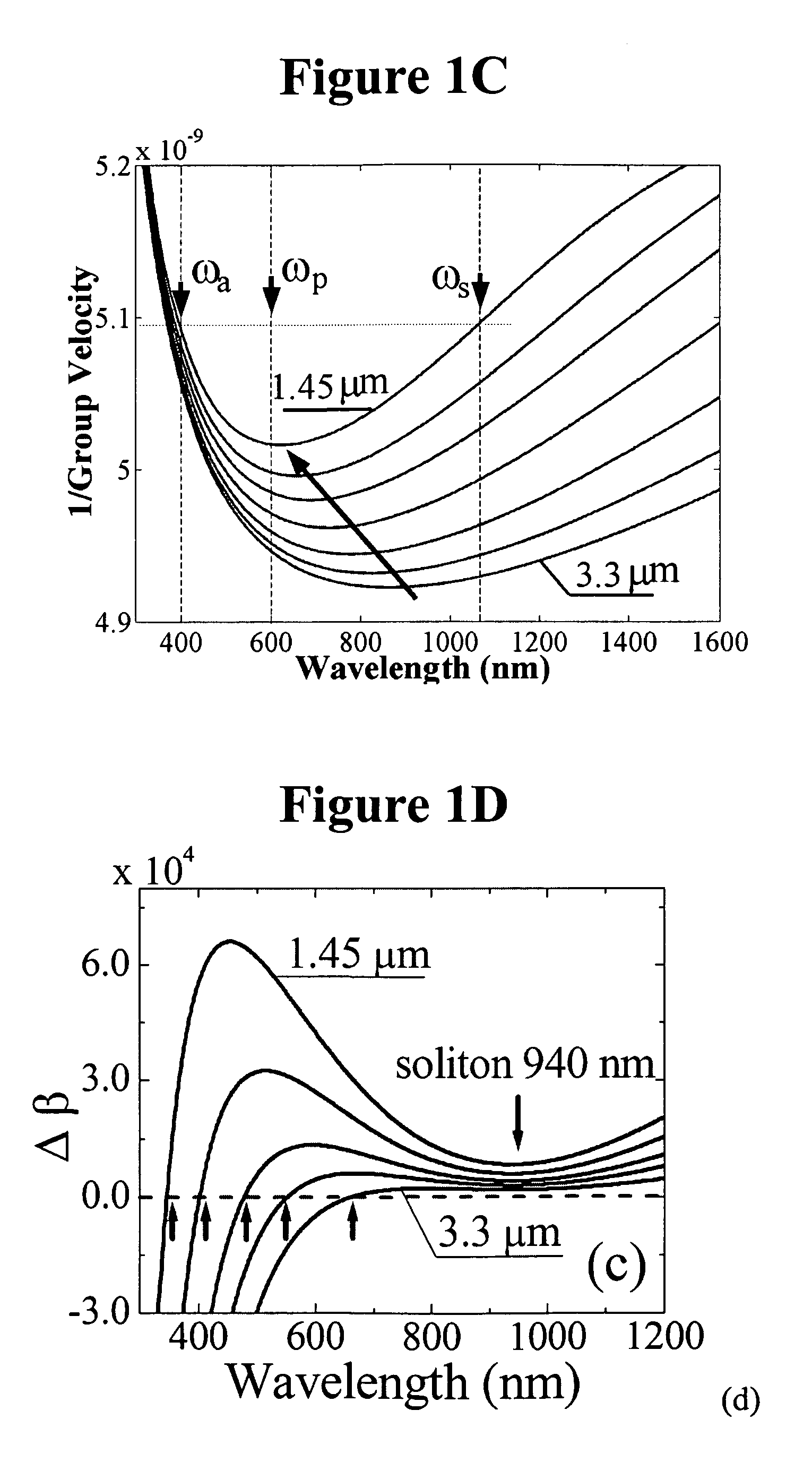Method and optical fiber device for production of low noise continuum
a technology of optical fiber and low noise, applied in the direction of instruments, optical waveguide light guides, optical light guides, etc., can solve the problems of large amplitude fluctuations of conventional continuum sources limiting accuracy, not suitable for some applications, and the sc generation process is very sensitive, so as to achieve a new design degree of freedom
- Summary
- Abstract
- Description
- Claims
- Application Information
AI Technical Summary
Benefits of technology
Problems solved by technology
Method used
Image
Examples
Embodiment Construction
[0026]A preferred embodiment of the present invention and variations thereon will be set forth in detail with reference to the drawings.
[0027]There are several methods to change the fiber longitudinal profiles. Exemplary methods are disclosed in United States Published patent application Ser. No. 2005 / 0094941 A1, published May 5, 2005, titled “Fiber device with high nonlinearity, dispersion control and gain,” and in F. Lu and W. H. Knox, “Generation of a broadband continuum with high spectral coherence in tapered single-mode optical fibers,”Optics Express, 12, 347-353 (2004), whose disclosures are hereby incorporated by reference in their entireties into the present disclosure. DMM HFs have been fabricated using the CO2 laser tapering with computer control. The computer carefully controls the temperature and the pulling speed for the DMM tapering process without introducing any hole collapsing. In the preferred embodiment, as will be explained in detail below, the fiber is tapered t...
PUM
 Login to View More
Login to View More Abstract
Description
Claims
Application Information
 Login to View More
Login to View More - R&D
- Intellectual Property
- Life Sciences
- Materials
- Tech Scout
- Unparalleled Data Quality
- Higher Quality Content
- 60% Fewer Hallucinations
Browse by: Latest US Patents, China's latest patents, Technical Efficacy Thesaurus, Application Domain, Technology Topic, Popular Technical Reports.
© 2025 PatSnap. All rights reserved.Legal|Privacy policy|Modern Slavery Act Transparency Statement|Sitemap|About US| Contact US: help@patsnap.com



